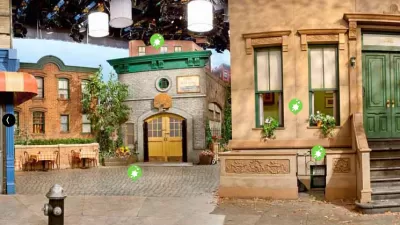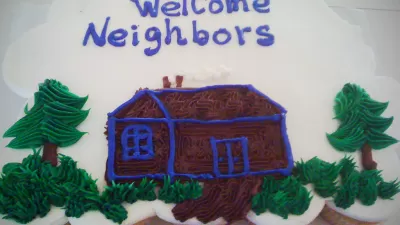As social media platforms evolve into specific niches, the Nextdoor platform is quickly expanding its online version of neighborhood-level interaction.

Mike Isaac reports on the expanding reach of Nextdoor—a San Francisco-based social networking start-up aimed at building community.
According to Isaac, "[investors] think Nextdoor is on to something. The company will announce on Wednesday that it has raised $110 million in venture capital from investors like Redpoint Ventures and Insight Venture Partners. The new investment values the three-and-a-half-year-old start-up at about $1.1 billion, putting the company among the sharply rising number of tech start-ups with 10-figure valuations."
Isaac adds that the investments indicate an interest in small (i.e., neighborhood-sized) communities. And neighborhoods are Nextdoor's niche. "Nextdoor has slowly built a network of more than 53,000 microcommunities across the United States, all based on local neighborhood boundaries. Nextdoor restricts communication to only those people who live close to one another; users are required to verify their identity and home address upon signing up," writes Isaac. Planetizen described Nextdoor as the "Facebook for neighborhoods" in April of 2014.
A day after Isaac's article was published, Oklahoma City announced that it had adopted a municipal profile on Nextdoor, to join the 200-plus neighborhoods in the city already using the social media platform. The city intends to use Nextdoor as a community engagement tool for the sharing of information in both directions.
FULL STORY: Nextdoor Social Network Digs Deep Into Neighborhoods

Study: Maui’s Plan to Convert Vacation Rentals to Long-Term Housing Could Cause Nearly $1 Billion Economic Loss
The plan would reduce visitor accommodation by 25,% resulting in 1,900 jobs lost.

Placekeeping: Setting a New Precedent for City Planners
How a preservation-based approach to redevelopment and urban design can prevent displacement and honor legacy communities.

Using Old Oil and Gas Wells for Green Energy Storage
Penn State researchers have found that repurposing abandoned oil and gas wells for geothermal-assisted compressed-air energy storage can boost efficiency, reduce environmental risks, and support clean energy and job transitions.

Washington State Plans Ambitious ‘Cycle Highway’ Network
The state is directing funding to close gaps in its existing bike network and make long-distance trips more accessible.

Homeowners Blame PG&E for Delays in ADU Permits
The utility says it has dramatically reduced its backlog, but applicants say they still face months-long delays for approvals for new electrical work.

Rethinking Wildfire Defense: How a Landscape Approach Can Protect Neighborhoods
Post-fire analysis of the Eaton Fire reveals that a landscape approach — including fire-resistant vegetation, home hardening, and strategic planning — can help reduce wildfire risk, challenging assumptions that trees and plants are primary fire hazards.
Urban Design for Planners 1: Software Tools
This six-course series explores essential urban design concepts using open source software and equips planners with the tools they need to participate fully in the urban design process.
Planning for Universal Design
Learn the tools for implementing Universal Design in planning regulations.
Borough of Carlisle
Caltrans
Heyer Gruel & Associates PA
Institute for Housing and Urban Development Studies (IHS)
City of Grandview
Harvard GSD Executive Education
Salt Lake City
NYU Wagner Graduate School of Public Service
City of Cambridge, Maryland




























